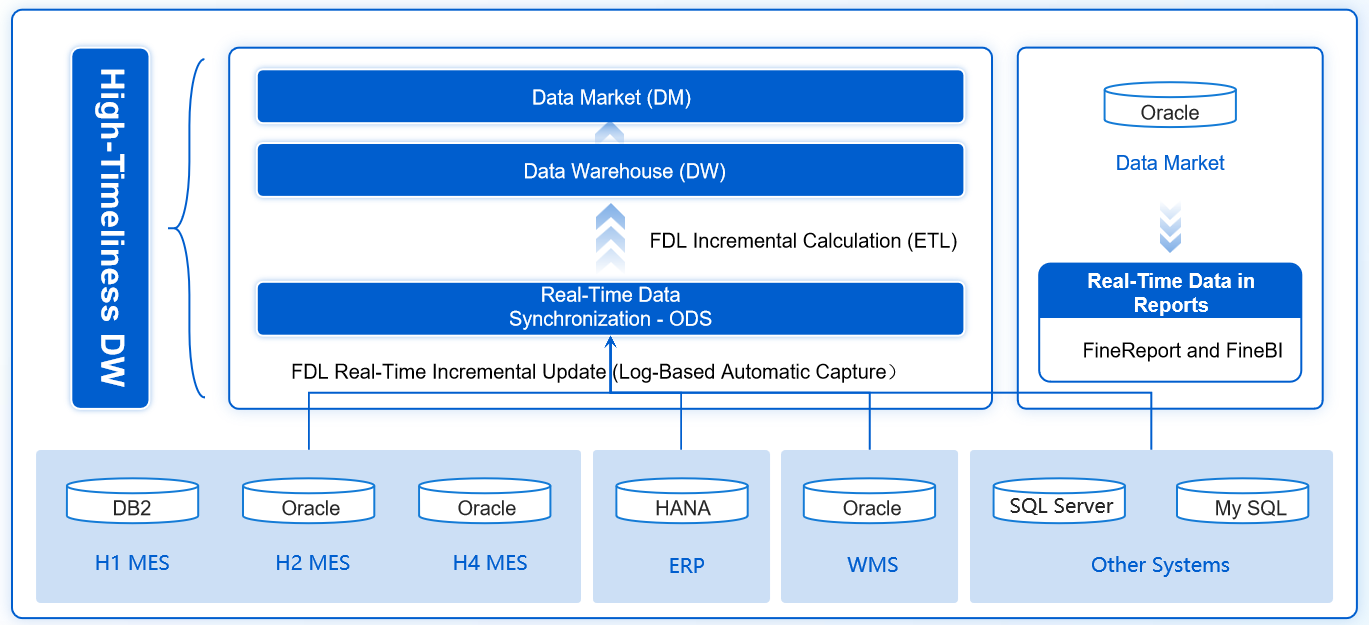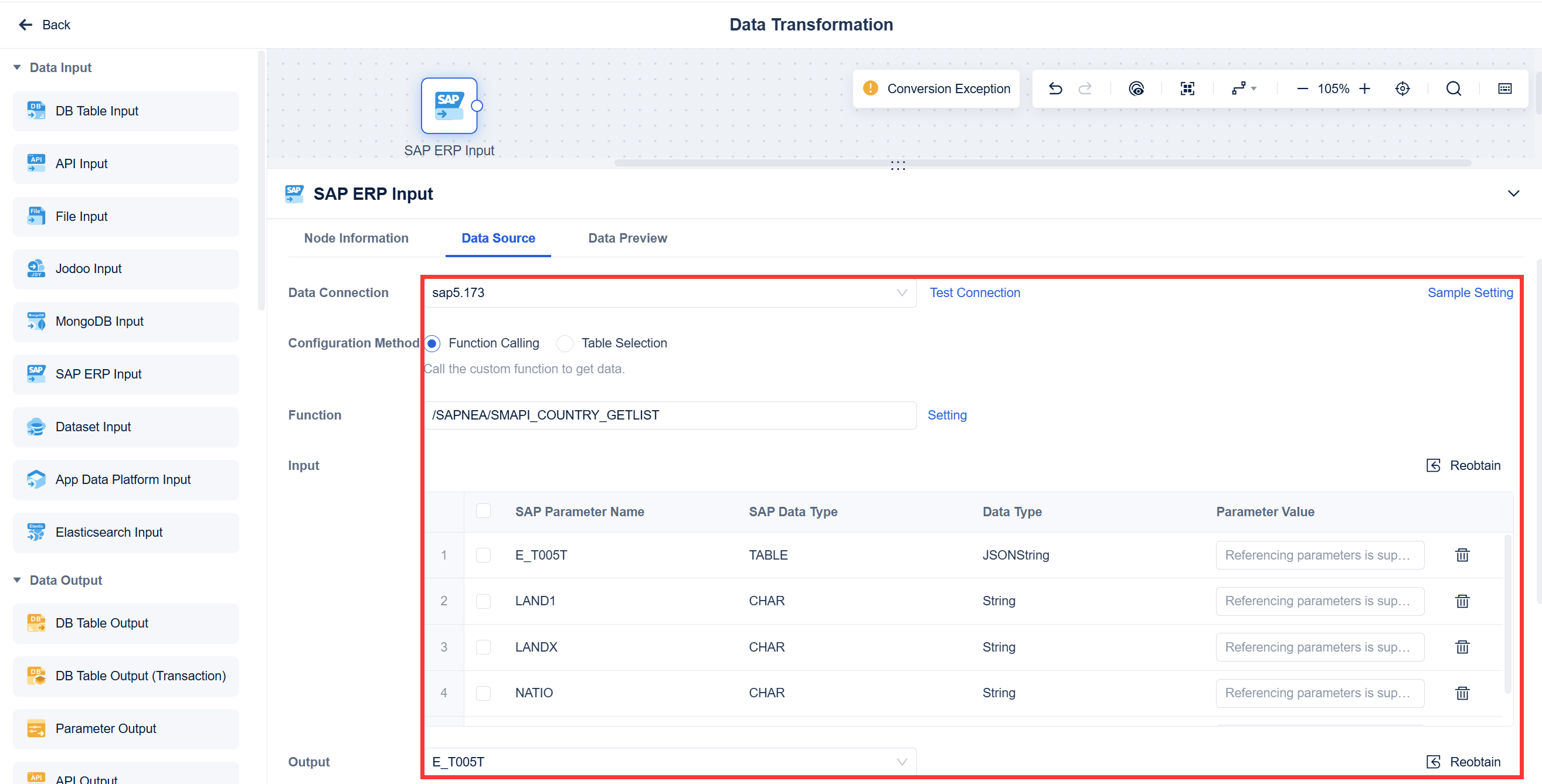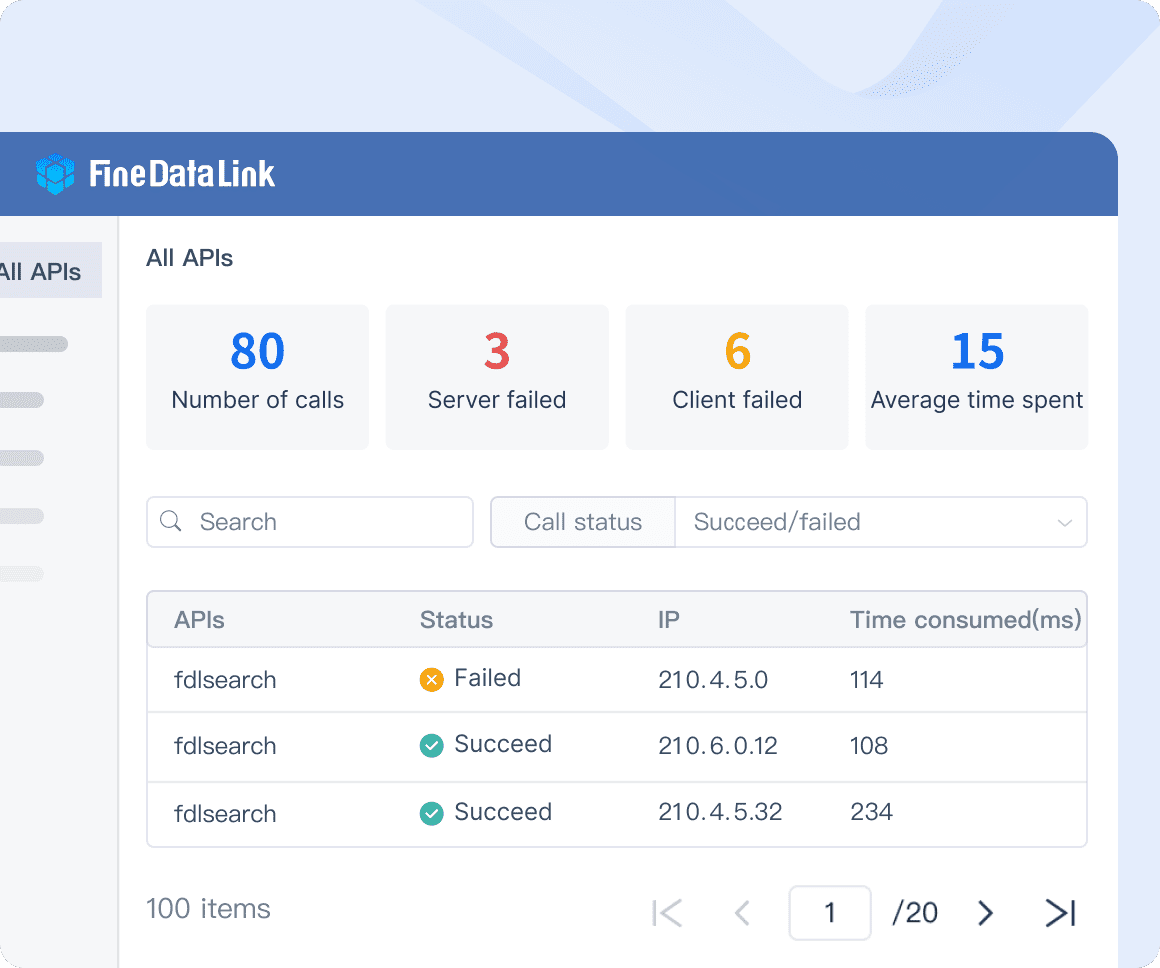

Data Warehouse Architecture
Sean, Industry Editor
Aug 28, 2024
Data warehouse architecture gives you a structured way to organize, store, and manage large volumes of data from many sources. You use it to build a foundation for business intelligence, allowing you to make informed decisions with reliable information. When you design data warehouse architecture well, you can consolidate, clean, and analyze data efficiently.
- You benefit from improved data quality through governance, monitoring, and standardization.
- You gain a framework for collecting, transporting, storing, and sharing data that supports business intelligence.
- You see better operational efficiency as modern architectures connect new data sources and streamline pipeline development.
- You can manage data lifecycles for enhanced compliance, protection, and security.
Data Warehouse Architecture

Data Warehouse Defined
You need a clear understanding of what a data warehouse is before you can appreciate the value of data warehouse architecture. When you see the term data warehouse defined, it refers to a centralized repository that stores integrated, subject-oriented, and time-variant data. This data comes from multiple sources across your organization. You use a data warehouse to support business intelligence, analytics, and reporting.
When you look at data warehouse defined in practical terms, you see a system that collects, organizes, and stores large volumes of structured data. You can access historical data, perform complex queries, and generate insights that drive business decisions. The overall data warehouse architecture provides a blueprint for how you collect, process, and manage this information.
A well-designed data warehouse architecture enables you to:
- Integrate data from various sources, including transactional databases, cloud applications, and external feeds.
- Store granular and historical data for trend analysis and forecasting.
- Ensure data quality and consistency for reliable reporting.
You often hear about the enterprise data warehouse, which serves as the single source of truth for your organization. This type of data warehouse supports data-driven strategies and helps you maintain a competitive edge.
Note: Data warehouses utilize online analytical processing (OLAP) to handle complex queries efficiently. This capability allows you to answer intricate business questions and make strategic decisions with confidence.
Key Components
When you start designing a data warehouse, you must understand its essential components. Each part plays a specific role in the overall data warehouse architecture, ensuring smooth data flow and reliable analytics.
Here are the key components you will encounter in most data warehousing systems:
- Data Sources: These include operational databases, cloud data warehouse platforms, SaaS applications, and external data feeds. You gather data from these sources for further processing.
- ETL (Extract, Transform, Load): This process extracts data from sources, transforms it into a consistent format, and loads it into the warehouse. ETL ensures data integration and prepares information for analysis. ETL processes also improve data quality and reliability, which are critical for effective business intelligence.
- Data Storage: This is where you store the processed data. Modern cloud data warehouse solutions offer scalable, secure, and cost-effective storage options. You can store both current and historical data for comprehensive analysis.
- Data Access: You retrieve and analyze data using query tools, dashboards, and reporting applications. Cloud data warehouse technology supports fast and flexible access for users across your organization.
- Data Security: You must protect sensitive information from unauthorized access. Security measures include encryption, access controls, and compliance with regulations.
- Data Quality: You need accurate, complete, and consistent data for trustworthy insights. Data quality checks and cleansing routines are part of the architecture.
- Metadata: This provides information about your data, such as definitions, formats, and lineage. Metadata helps you understand and manage your data assets.
- Data Governance: Policies and guidelines ensure proper management, usage, and compliance of your data.
- Analytics and Reporting: These tools allow you to visualize, analyze, and share insights with stakeholders.
You can see the main functions of a data warehouse and their contributions to business intelligence in the table below:
| Function | Contribution to Business Intelligence |
|---|---|
| Data integration and storage | Consolidates data from multiple sources for comprehensive analysis. |
| Data analysis | Enables complex queries and insights generation. |
| Data quality and accessibility | Ensures reliable data for informed decision-making. |
When you design a data warehouse, you must also consider the following features:
- Integrated: You combine data from various sources for a unified view.
- Granular: You store detailed data to support diverse analytical needs.
- Historical: You maintain a continuous record over time for trend analysis.
The ETL process is central to data warehouse automation. ETL integrates data from diverse sources, both structured and unstructured, and prepares it for storage in the cloud data warehouse. This approach enhances accessibility for analysis and reporting. ETL also ensures high data integrity and reliability, which minimizes errors and maintains consistent data quality.
Tip: When designing a data warehouse, focus on scalability and flexibility. Cloud data warehouse platforms allow you to scale resources as your data grows and adapt to new business requirements.
You may face challenges when building your data warehouse architecture. These include high implementation costs, long development cycles, and difficulties managing unstructured data. You must structure your data before loading, which can be resource-intensive. Historical data can increase storage costs, and integrating new data sources may complicate your architecture. Not all data types, such as video or audio, fit well in traditional data warehousing technology.
Despite these challenges, modern cloud data warehouse solutions and data warehouse automation tools help you overcome many obstacles. You can streamline data collection and storage, improve integration, and support advanced analytics with greater efficiency.
By understanding the key components and functions, you lay a strong foundation for designing a data warehouse that meets your organization's needs. You enable better data integration, support business intelligence, and unlock the full potential of your data assets.

Data Warehouse Architecture Types
When you explore the types of warehouse architectures, you see three main models: single-tier, two-tier, and three-tier. Each model offers unique benefits and fits different business needs. Understanding these types helps you choose the right approach for your organization, especially as you consider cloud data warehouses.
Single-Tier
Single-tier data warehouse architecture aims to simplify data management by reducing the number of layers. You often find this model in small-scale operations where simplicity matters most. It works best when real-time data access is not critical and when you have minimal data processing needs.
| Characteristic | Description |
|---|---|
| Compact Data Set | Stores a smaller, more manageable amount of data. |
| Data Redundancy Reduction | Removes duplicate data, improving quality. |
| Layer Structure | Includes source, data warehouse, and analysis layers. |
| Physical and Virtual | Only the source layer is physical; others are virtual. |
| Lack of Separation | No clear split between analytical and transactional processing. |
You may notice performance issues with this model, especially if you handle large data volumes or multiple data streams. Single-tier architecture does not separate analytical and transactional tasks, which can cause inefficiency.
Two-Tier
Two-tier data warehouse architecture introduces a staging area between the data source and the warehouse. This model improves performance and scalability compared to single-tier. You benefit from easier data management and maintenance.
| Advantages | Disadvantages |
|---|---|
| Improved performance and scalability | More complex than single-tier |
| Simplifies data management and maintenance | Possible bottlenecks between staging and warehouse |
You might encounter performance bottlenecks between the staging area and the warehouse. However, many organizations still use this model for moderate data volumes and when they want a balance between simplicity and capability.
Three-Tier
Three-tier data warehouse architecture is the most common choice for large organizations and cloud data warehouses. This model separates data sources, the warehouse, and the presentation layer. You gain real-time and incremental loading, which reduces latency and speeds up decision-making. Query optimization techniques, such as indexing and partitioning, further enhance performance.
- Real-time updates and incremental loading support faster analytics.
- Query optimization improves data retrieval speed.
- Integration tools help standardize and improve data quality.
| Benefit | Description |
|---|---|
| Improved Scalability | You can scale each tier independently for better resource allocation. |
| Improved Security | The separation between layers enhances protection against security threats. |
Three-tier architecture supports cloud data warehouses by allowing you to scale resources as your data grows. You also gain better security, as the presentation and data layers do not communicate directly.
Why Data Warehouse Architecture Matters
Business Value
You want your organization to achieve measurable business outcomes. Data warehouse architecture helps you reach these goals by providing a reliable foundation for data management and analytics. When you implement a robust architecture, you see direct improvements in cost, speed, and flexibility.
Consider the following results organizations have achieved:
| Outcome | Metric |
|---|---|
| License and maintenance costs | 65% lower in the first year |
| Query performance | 5–10× faster than previous |
| Migration completion time | Completed within one year |
You notice lower total cost of ownership, faster access to data, on-demand scalability, and greater flexibility. These benefits of a data warehouse allow you to optimize resources and respond quickly to changing business needs.
You can quantify the return on investment from your data warehouse architecture by following a clear process:
- Calculate costs. You analyze project scope, hardware and software requirements, and total cost of ownership.
- Identify benefits. You measure improvements in data quality and reductions in time spent on data preparation.
- Compare costs and benefits. You use financial metrics like ROI ratio, net present value, or internal rate of return to assess value.
- Communicate results. You present findings to stakeholders, highlighting both quantitative and qualitative benefits.
You see that the benefits of a data warehouse extend beyond cost savings. You gain a scalable platform that supports growth and innovation. Business intelligence tools become more effective when they operate on clean, integrated data. You empower your teams to make faster decisions and improve operational efficiency.
Tip: When you invest in data warehouse architecture, you build a foundation that supports long-term business success. You reduce manual work, improve data quality, and enable advanced analytics.
Data-Driven Decisions
You want your decisions to be based on facts, not guesswork. Data warehouse architecture gives you access to clean, consistent, and governed data. This structure eliminates uncertainty and helps you make confident choices.
| Evidence Type | Description |
|---|---|
| Improved Decision Making | Clean, consistent, and governed data eliminates guesswork, enabling confident, data-driven choices. |
| Strategic Driver | A resilient data warehouse architecture enhances enterprise agility and market responsiveness. |
| Real-Time Data Access | Decisions are accelerated with real-time data, allowing for timely competitive actions. |
| Centralized Data Access | A unified view of data fosters a data-driven culture, encouraging decisions based on facts. |
You see how a centralized data warehouse architecture supports a data-driven culture. You encourage teams to rely on facts and analytics instead of intuition. Real-time data access lets you respond quickly to market changes and competitive threats.
A Deloitte survey found that 49% of companies using data warehouses reported significant improvements in decision-making efficiency. You experience faster and more accurate business analytics. You reduce the time needed to prepare data and increase the speed of reporting.
Business intelligence becomes more powerful when you use a well-designed data warehouse. You gain deeper insights, identify trends, and make strategic decisions with confidence. The benefits of a data warehouse include improved accuracy, speed, and reliability in your analytics.
Note: When you rely on data warehouse architecture, you create a resilient foundation for business intelligence tools. You support better decisions at every level of your organization.

Practical Applications of Data Warehouse Architecture

FineDataLink in Action
You need a data integration platform that supports modern data warehouse architecture. FineDataLink gives you this capability. You can use FineDataLink to build both offline and real-time data warehouses. The platform supports real-time data synchronization, ETL, and ELT processes, which are essential for reliable data integration.
FineDataLink uses a Real-Time Task module to deliver data instantly from one point to another. You can integrate data cleaning operations, such as parsing, during this process. This approach improves data utilization and ensures your data remains timely. The Data Pipeline module allows you to synchronize data in real time, whether you work with a single table, multiple tables, or an entire database. You can configure synchronization tasks based on your specific data connections. FineDataLink monitors changes in database logs at the source and uses Kafka as middleware to store incremental data temporarily. This process enables real-time writing of data to your target systems.
| Feature | Description |
|---|---|
| Data Integration | Connects various data sources and preprocesses data through flexible ETL development. |
| Real-time Synchronization | Uses Data Pipeline and log monitoring to address data latency and keep data current. |
| Flexible Data Processing | Supports both ETL and ELT for customized business scenarios. |
| Visualized Integration | Provides a low-code interface to eliminate silos and store historical data securely. |
You can see how FineDataLink helps you overcome common challenges in data warehouse architecture, such as data silos, real-time processing, and scalability.

Industry Solutions
Many industry leaders use data warehouse architecture to address data silos and scalability challenges. You can centralize data from multiple sources for analytics, which improves collaboration and data sharing. Modern data platforms, like FineDataLink, help you manage and analyze data efficiently. Cloud-native solutions give you the flexibility to adapt as your data needs change.
The BOE Technology Group, a leader in the IoT and semiconductor display industry, faced issues with fragmented data and inconsistent metrics. By building a data warehouse and standardizing metrics, BOE reduced inventory costs by 5% and increased operational efficiency by 50%. You can achieve similar results by using a unified data warehouse architecture and business intelligence solutions.
FanRuan's business intelligence solutions provide robust data integration, automated data cleansing, and advanced analytics. You can use these tools to break down silos, improve data quality, and support real-time data analytics. This approach helps you make informed decisions and drive business growth.

Comparisons in Data Warehouse Architecture
Data Warehouse vs Data Mart
You often hear about both data warehouses and data marts, but they serve different purposes. Data warehouses handle large volumes of data from across your organization. Data marts focus on specific business functions or departments. You use a data warehouse for enterprise-wide analytics, while a data mart supports targeted analysis.
| Aspect | Data Warehouse | Data Mart |
|---|---|---|
| Scale | Large, often terabytes to petabytes | Smaller, typically around a terabyte |
| Data Scope | Covers multiple departments and functions | Focused on specific business functions |
| Use Cases | Historical trend analysis, regulatory reporting | Operational analytics, self-service BI |
- Data warehouses store extensive historical data from all business functions. Data marts contain a limited scope, often just a few years from specific departments.
- You choose a data mart for focused departmental needs. You select a data warehouse for a comprehensive organizational view.
- Data marts allow for quicker access to relevant data, which helps you gain faster insights.
Tip: Many organizations start with data marts and later integrate them into a larger data warehouse. This bottom-up approach can deliver quick wins for specific teams.
Data Warehouse vs Data Lake
You may wonder how a data warehouse compares to a data lake. The main difference lies in the type and structure of data each stores. Data warehouses require structured data and use ETL processes. Data lakes store raw, unstructured, and semi-structured data, using a schema-on-read approach.
| Feature | Data Warehouse | Data Lake |
|---|---|---|
| Data Structure | Structured data only | Structured, semi-structured, and unstructured data |
| Data Processing | ETL (Extract, Transform, Load) | Schema-on-read |
| Storage Method | Structured format | Flat architecture |
| Data Loading | Requires structured data before loading | Allows raw data loading |
| Cost | Generally higher due to licensing and structure | Lower cost due to open-source technologies |
| Performance | Optimized for read and write operations | More complex queries |
| User Accessibility | Fixed queries for specific insights | Flexible for data scientists and engineers |
- Data lakes store raw data, which supports big data analytics and machine learning. Data warehouses focus on processed data for business intelligence.
- Data lakes require advanced tools for analysis. Data warehouses offer built-in analytics and reporting.
Note: Data warehouse architecture provides a rigid structure for reliable insights, while data lakes offer flexibility for diverse data types.
Deployment Models
You can deploy your data warehouse architecture on-premises or in the cloud. Each model offers unique benefits.
| Deployment Model | Benefits |
|---|---|
| On-premises | Complete control, strict governance, steady connectivity, high availability |
| Cloud-based | Modern management, fully managed SaaS, on-demand scalability, pay-as-you-go pricing |
- On-premises solutions give you full control and meet strict compliance needs.
- Cloud-based models offer scalability and reduce the need for in-house IT resources.
- Cloud deployments often result in lower upfront costs and easier maintenance.
Tip: Choose the deployment model that aligns with your business goals, budget, and compliance requirements.

Data warehouse architecture gives you a strong foundation for modern data management and business intelligence. You gain agility, improved data quality, and business alignment.
| Key Takeaway | Description |
|---|---|
| Modern Architectures Bring Agility | Cloud and real-time tools help you scale and integrate data faster. |
| Data Quality Pays Off | Automated monitoring maintains trust and reliability. |
You should choose platforms like FineDataLink to streamline integration, support real-time analytics, and enable continuous optimization. Consider cloud-native solutions, robust governance, and self-service analytics to keep your strategy scalable and actionable.
FanRuan
https://www.fanruan.com/en/blogFanRuan provides powerful BI solutions across industries with FineReport for flexible reporting, FineBI for self-service analysis, and FineDataLink for data integration. Our all-in-one platform empowers organizations to transform raw data into actionable insights that drive business growth.
FAQ
You use data warehouse architecture to organize and manage data from different sources. This structure helps you store, clean, and analyze data efficiently. It supports business intelligence and enables you to make better decisions.
Data warehouse architecture uses processes like ETL to clean and standardize data. You benefit from consistent, accurate, and reliable information. This ensures your reports and analytics reflect true business performance.
Yes, you can build a real-time data warehouse using modern data warehouse architecture. Tools like FineDataLink support real-time data synchronization. This lets you access up-to-date information for faster decision-making.
You may face challenges such as integrating data from many sources, managing large data volumes, and ensuring data security. You also need to maintain data quality and handle system scalability as your needs grow.
You should consider your data volume, business goals, and need for real-time analytics. Evaluate cloud versus on-premises options. Choose a solution that supports your growth and integrates easily with your existing systems.







